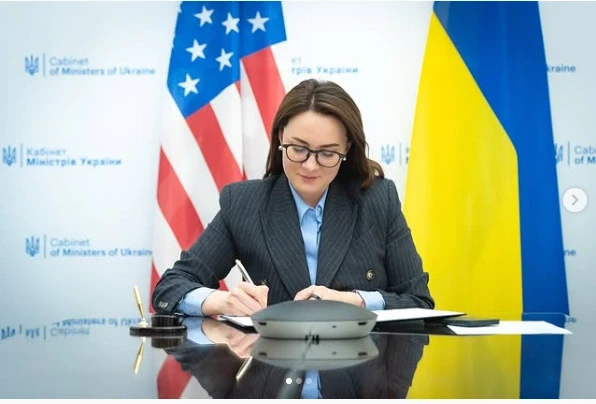After protracted and at times contentious negotiations, the United States and Ukraine have sealed a pivotal agreement to jointly benefit from Ukraine’s rich natural resource base—marking a new phase in their strategic partnership.
The accord, signed in Washington on Wednesday, paves the way for shared revenue from the eventual sale of Ukraine’s critical minerals and energy reserves. In doing so, it aims to create a long-term economic incentive for continued American investment in Ukraine’s defense, reconstruction, and stability.
Strategic Minerals at the Center of the Deal
Ukraine is home to substantial deposits of high-demand minerals such as lithium, titanium, and graphite—elements that are vital for renewable energy, military hardware, and global infrastructure development. The U.S., increasingly eager to reduce dependency on Chinese mineral supply chains, sees Ukraine as a key alternative source.
U.S. Treasury Secretary Scott Bessent hailed the agreement as a commitment to Ukraine’s “lasting peace and prosperity,” adding that it would help “unlock Ukraine’s growth assets.” The agreement also includes the launch of a new U.S.-Ukraine Reconstruction Investment Fund designed to accelerate Ukraine’s post-war economic recovery.
Terms of Partnership and Political Significance
According to Ukraine’s Deputy Prime Minister Yulia Svyrydenko, the agreement establishes an equal partnership—structured as a 50:50 venture—that maintains Ukraine’s ownership of its resources while welcoming global investment. Projects will focus on sectors such as energy, oil and gas, and mining, but the deal still requires ratification by Ukrainian lawmakers.
Notably, U.S. assistance under the deal will also encompass renewed military support, including advanced air defense systems, positioning the agreement as both an economic and security pact.
President Donald Trump, who has insisted on linking any future U.S. security guarantees to concrete economic returns, had long advocated for such a deal. Though he originally pushed for Ukraine to repay all U.S. military aid provided since Russia’s full-scale invasion in 2022, the final terms represent a compromise—granting the U.S. access to strategic resources without full reimbursement of past assistance.
Tensions and Delays Behind the Scenes
Negotiations hit a stumbling block earlier this year when last-minute amendments proposed by Kyiv reportedly frustrated U.S. officials. Disagreements centered on transparency, fund governance, and financial oversight, with U.S. sources accusing Ukraine of attempting to revisit settled terms. The initial signing, slated for February, was postponed following a tense exchange at the White House, during which Trump accused President Volodymyr Zelensky of risking escalation with Moscow.
A diplomatic breakthrough occurred during a side meeting between Trump and Zelensky at the Vatican, held during the funeral of Pope Francis. Speaking later to NewsNation, Trump emphasized the strategic value of Ukraine’s mineral wealth: “They have what a lot of countries don’t—rare earth materials. It’s a big asset. We’re not just giving aid; we’re investing.”
Wider Geopolitical Implications
The agreement also sends a pointed message to global observers. The U.S. Treasury’s announcement explicitly condemned Russia’s invasion and declared that no individual or entity complicit in supporting Moscow’s war effort would be allowed to profit from Ukraine’s reconstruction.
As talks between the U.S. and Russia over a possible ceasefire continue to falter, the resource-sharing pact underscores Washington’s long-term stake in Ukraine’s sovereignty and recovery.




